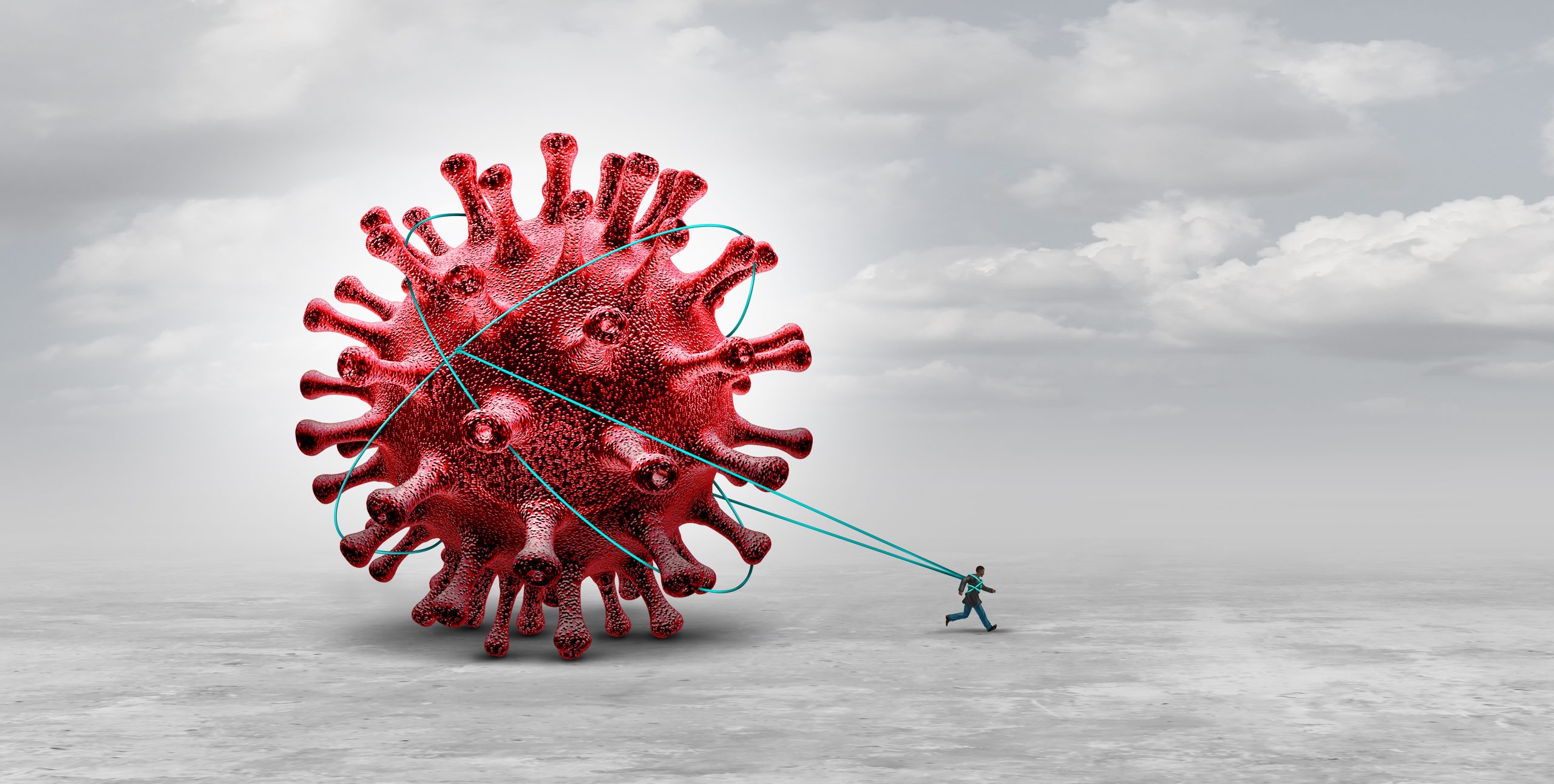
Long COVID Syndrome - Personal Opinion and Recent Findings
19.10.2023 16:07
Long COVID syndrome remains an ill-defined clinical entity that may evolve months after an acute infection by the SARS-CoV-2 virus.
A wide range of different symptoms and signs related to a variety of organs have been attributed to it and include: altered heart rate variability upon postural changes, fatigue and pronounced post-exertional fatiguability, dizziness, cognitive alterations (often referred to as brain fog), sleep disorder, depressive mood, and numerous others. Regarding its underlying causes, several mechanisms have been implicated including neuroinflammation, autoimmune reactions, autonomous nervous system alterations, circulatory disturbances, as well as imbalance of the gut microbiota.
Early during the COVID-19 pandemic, several of these symptoms have been attributed to organ damage during acute infection, but the fact that frequently individuals after mild or subclinical infection are affected shows that Long COVID is distinct. Long COVID has been observed across all ages including young adults and even children. Due to the initial difficulties to distinguish symptoms from prior organ damage during acute SARS-CoV-2 infection from those that develop through completely different mechanisms, the epidemiological data will need revision. The prevalence of Long COVID with numbers of up to 10% or more of SARS-CoV-2-infected individuals are certainly overestimated. Yet it remains undisputed that a substantial number of persons has developed Long COVID with severe consequences for their personal life such as symptoms of chronic illness and inability to work or function normally for prolonged periods of time. The burden from Long COVID for the health care system and the society is high, particularly since many affected individuals are young. It is, therefore, crucial to gain a better understanding of the mechanisms underlying the syndrome and explore potential treatments.
This challenge is complicated by several issues: 1) Depending on their leading symptoms, Long COVID patients will end up at physicians of different medical specialties (infectiologists, pulmonologists, cardiologists, gastroenterologists, neurologists, etc), which is due to the fact that the symptoms are diverse manifestations of the same syndrome,. As a result, the medical journey of Long COVID patients is often tortuous and erratic. 2) Many physicians still perceive Long COVID and its symptoms as “functional”, which means not caused by a medical condition with a tangible pathogenesis. In fact, on September 28, 2023 a German neurologist suggested in an interview with the Frankfurter Allgemeine Zeitung that in a majority of affected persons the symptoms might be related to psychosomatic factors and, therefore, concerns about Long COVID appear exaggerated.[1]
To comment on this, I will use an analogy from other diseases and a personal anecdote. Altered sensation in areas of the skin reported by Multiple Sclerosis (MS) patients cannot be objectively verified during neurological examination. However, mechanistic insight and the availability of novel diagnostic tool have changed the picture. Knowing that sensory abnormalities are very frequent in MS, the diagnosis can now be confirmed by analyzing structural changes in the brain using magnetic resonance imaging and/or by analyzing the cerebrospinal fluid. Today, no neurologist would doubt the veracity of a patient mentioning altered sensation. This is different with Long COVID. We do not understand it yet and, therefore, lack the tools for a distinct diagnosis – which may prompt doubts or even discard it as a medical condition. Let me illustrate this with a personal anecdote. When I was working at the National Institutes of Health in the 1990-ies, the National Institute of Allergy and Infectious Disease (with Anthony Fauci as a director, who became a prominent person in the fight against COVID in the US) was not listing Chronic Fatigue Syndrome (CFS) or Myalgic Encephalitis (ME) as distinct diagnosis for the same reasons that now hold for Long COVID. There were no clear pathogenesis, diagnostic tools, or treatment. In the meantime, this has changed. While still poorly understood, CFS/ME is recognized today as a medical entity.
Bearing this in mind, I have no doubt that Long COVID qualifies as a medical entity or syndrome as well. It shares many symptoms not only with CFS/ME, but also with the symptomatic infection with another virus, Epstein Barr virus (EBV), called infectious mononucleosis (IM), as well as with a rare complication of the tick-borne bacterial infection Chronic Neuro-Borreliosis (CNB). In all three conditions, proinflammatory immune activation and the production of certain cytokines known to cause fatigue and sleep problems appear to be involved.
Apart from the direct SARS-CoV-2 viral infection of organs during the acute phase, indirect mechanisms such as immune activation, changes in the gut microbiota, involvement of the peripheral, autonomous, and central nervous systems, as well as vascular and endocrine alterations have been shown to play a role in Long COVID. It appears conceivable that such indirect mechanisms may also be associated with the complex and potentially severe symptoms observed in Long COVID. Moreover, the fact that previously healthy and young individuals are affected to such an extent makes it difficult to dismiss these symptoms as functional.
This is addressed in our research project pursued in the context of a grant from The LOOP Zurich by focusing on two aspects: 1) Does Long COVID involve an immune activation similar to an acute SARS-CoV-2 infection and the three chronic conditions CFS/ME, IM, and CNB? 2) Can this immune response be modulated via the gut microbiome of affected patients? We followed a cohort of Long COVID patients for more than one year by app- and sensor-based measurements, standardized questionnaires and by analyzing their immune function in detail. These studies documented a very slow, gradual improvement of symptoms such as fatigue, post-exertional fatiguability, and abnormal heart rate variation. Consistent with reports of multiple autoimmune diseases of the peripheral- and central nervous system (CNS) including Guillain Barré syndrome, MOG-associated disease, and MS, which all appeared after SARS-CoV-2 infection, we observed an increased reactivity of T lymphocytes against MS target autoantigens. Based on the rationale of an involvement of proinflammatory immune responses and dysregulated gut microbiota in the pathogenesis of Long COVID, we performed a pilot treatment trial with 24 inactivated gut bacterial strains, so-called paraprobiotics, which had been shown to have beneficial effects on immune-mediated problems (1-3). In a year-long study including a limited number of Long COVID patients, we administered paraprobiotics for a four-week period, analyzing their neurocognitive functions and immune parameters before and after the treatment. The results were intriguing, showing enhancements in various neurocognitive parameters and immune functions tested, notably a reduction in the expression of Toll-like receptors on immune cells, which play a crucial role in immune activation against a wide spectrum of pathogens. These changes were more pronounced in young individuals. Our data are not published yet, but a manuscript has been prepared. While preliminary, they provide strong evidence that an altered immune reactivity is a part of Long COVID, which would qualify it as a “real” medical entity. Furthermore, the use of paraprobiotics as a potential treatment for Long COVID should quickly be followed up on by larger studies.
1.„Mit Long Covid schürt man nur noch Angst“, FAZ 28.09.2023
2. Mehta JP, Ayakar S, Singhal RS (2023) The potential of paraprobiotics and postbiotics to modulate the immune system: A Review. Microbiol Res. 275: 127449. doi: 10.1016/j.micres.2023.127449. Epub 2023 Jul 6 .
3.Akter S, Park J-H, Jung HK (2020) Potential Health-Promoting Benefits of Paraprobiotics, Inactivated Probiotic Cells. J Microbiol Biotechnol. 30(4): 477–481. doi: 10.4014/jmb.1911.11019
4. Kanauchi O, Andoh A, AbuBakar S, Yamamoto N (2018) Probiotics and Paraprobiotics in Viral Infection: Clinical Application and Effects on the Innate and Acquired Immune Systems. Curr Pharm Des. 24(6): 710-717. doi: 10.2174/1381612824666180116163411.

